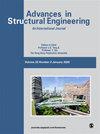Numerical simulation and experimental study on seafloor sampling of an anchor-type mud collector based on SPH-FEM coupling method
IF 2
4区 工程技术
引用次数: 0
Abstract
Marine sediments are important for research in scientific fields such as marine geology, environmental testing of waters, marine biology and seabed resource exploration. Among them, mud miner is an important way to obtain sediments. However, due to the complexity of the marine environment, the seabed sampling operation is a relatively difficult and complicated project. The structural design of the sampler, the operation mode, and the interaction between the sampler and the sediment affect the sampling effect, which leads to the low efficiency of the sampler operation. In order to investigate the main factors affecting the drag force of the sampler during seafloor sampling, this paper takes a simple and portable anchor-type mud collector surface sediment sampler as a study. This paper introduces the mechanical structure and working principle of an anchor-type mud collector, establishes a mechanical model of the mud collector seafloor sampling process and derives the main factors affecting the dragging force: internal friction angle; the horizontal angle of the bi-directional shaft rod; undercut angle [Formula: see text] of bottom cover and dragging speed. A FEM-SPH method based on the coupling of the finite element method (FEM) and the smooth particle hydrodynamics method (SPH) was proposed to simulate the dynamic process of mud collector subsea sampling, and the mechanical data of fine sand and clay were obtained through land-based experiments. Based on the comparison between experimental data and numerical simulation data, the simulation validity of the FEM-SPH method was verified. The results show that the drag force of the clay was greater than that of the fine sand in the experiment of cutting the lower cover of the mud collector into the fine sand and clay, the internal friction angle of the clay is greater than that of the fine sand; with the increase in horizontal inclination angle and the decrease in undercut angle, the dragging force gradually increased; The dragging speed ranged from 0.2 to 0.6 m/s, with an increase in the mass of clay and fine sand collected with increasing speed, resulting in a gradual increase in dragging force. This paper provides a new method to study the force of the mud collector, provides a theoretical method to reduce the intensity and difficulty of manual work in the sampling process and increase the efficiency of sampling.基于 SPH-FEM 耦合方法的锚式泥浆收集器海底取样数值模拟与实验研究
海洋沉积物对海洋地质、水域环境检测、海洋生物和海底资源勘探等科学领域的研究具有重要意义。其中,采泥是获取沉积物的重要途径。然而,由于海洋环境的复杂性,海底取样作业是一项相对困难和复杂的工程。采样器的结构设计、作业方式以及采样器与沉积物之间的相互作用都会影响采样效果,导致采样器作业效率低下。为了探究海底取样过程中影响取样器阻力的主要因素,本文以一种简单便携的锚式集泥器表层沉积物取样器为研究对象。本文介绍了锚式集泥器的机械结构和工作原理,建立了集泥器海底取样过程的力学模型,并推导出影响拖曳力的主要因素:内摩擦角、双向轴杆水平角、底盖下切角[公式见正文]和拖曳速度。提出了一种基于有限元法(FEM)和光滑粒子流体力学法(SPH)耦合的 FEM-SPH 方法来模拟泥浆采集器海底取样的动态过程,并通过陆基实验获得了细砂和粘土的力学数据。基于实验数据与数值模拟数据的对比,验证了 FEM-SPH 方法的模拟有效性。结果表明,在将集泥器下盖板切入细砂和粘土的实验中,粘土的拖拽力大于细砂的拖拽力,粘土的内摩擦角大于细砂的内摩擦角;随着水平倾角的增大和下切角的减小,拖拽力逐渐增大;拖拽速度在 0.2 至 0.6 m/s 之间,随着速度的增大,收集的粘土和细砂质量增加,导致拖拽力逐渐增大。本文提供了一种研究泥浆采集器受力的新方法,为降低采样过程中人工作业的强度和难度,提高采样效率提供了理论依据。
本文章由计算机程序翻译,如有差异,请以英文原文为准。
求助全文
约1分钟内获得全文
求助全文
来源期刊

Advances in Mechanical Engineering
Engineering-Mechanical Engineering
自引率
4.80%
发文量
353
期刊介绍:
Advances in Mechanical Engineering (AIME) is a JCR Ranked, peer-reviewed, open access journal which publishes a wide range of original research and review articles. The journal Editorial Board welcomes manuscripts in both fundamental and applied research areas, and encourages submissions which contribute novel and innovative insights to the field of mechanical engineering
 求助内容:
求助内容: 应助结果提醒方式:
应助结果提醒方式:


